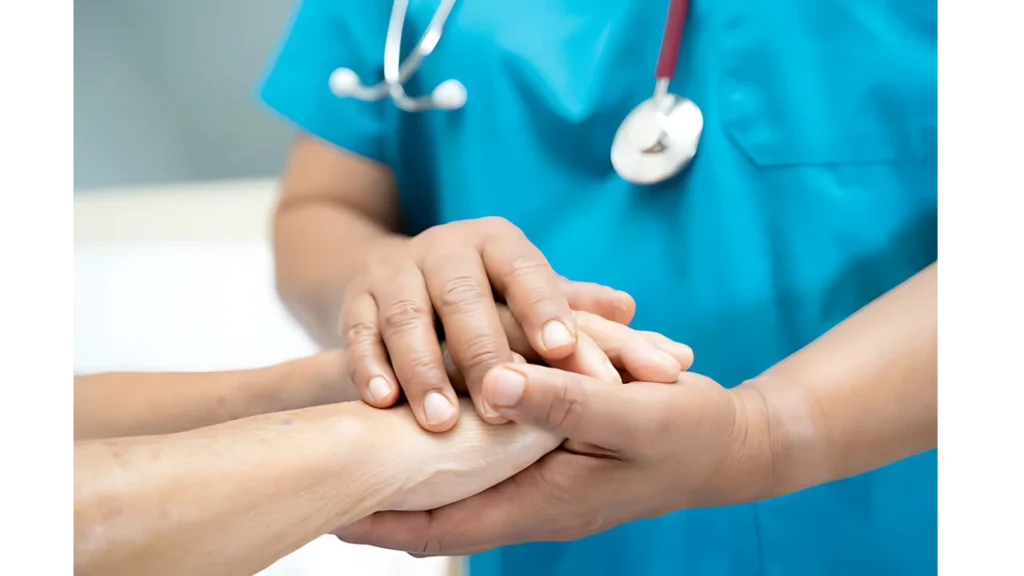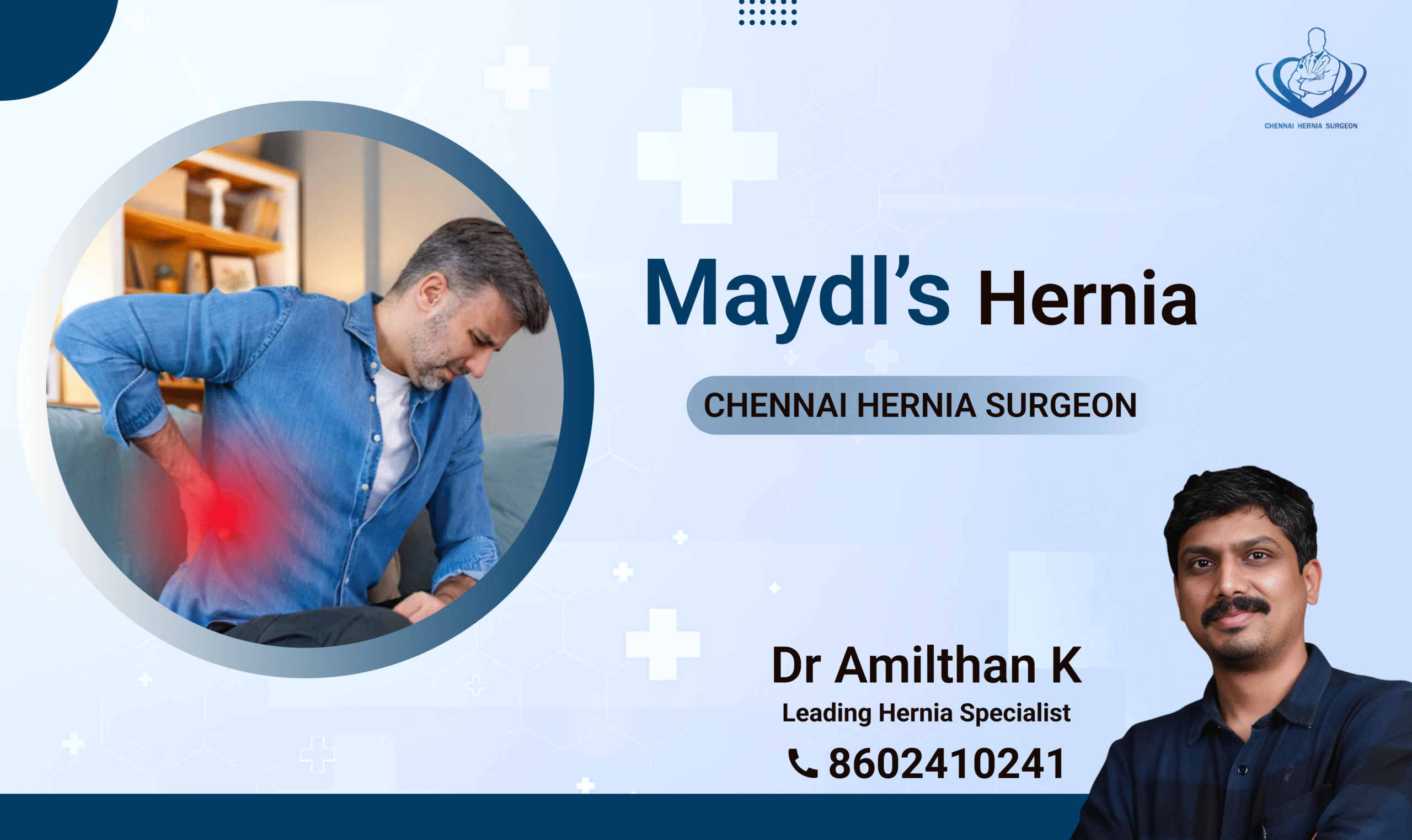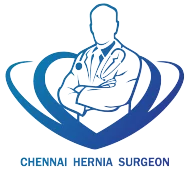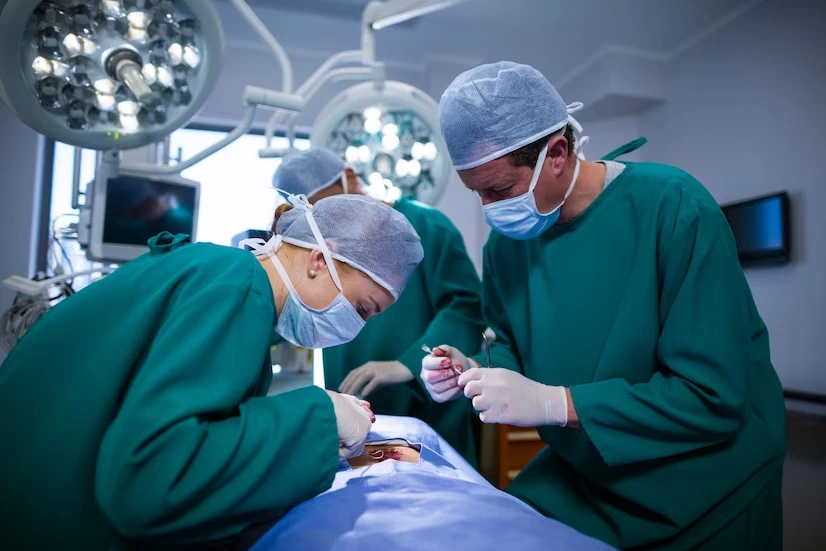Left paraduodenal hernia is the most common paraduodenal hernia to occur. It is an internal hernia wherein the small intestine herniates through the weak spot in the peritoneum behind the mesocolon.
Left paraduodenal hernias like any internal hernias are hard to diagnose but they can be effectually treated through modern surgical techniques.
Read below to learn about the symptoms, causes, complications, and ways to prevent a left paraduodenal hernia to diagnose it early and electively repair it without encountering any complications.
Table of Contents
ToggleWhat is a Left Paraduodenal Hernia?
A left paraduodenal hernia is an abnormal protrusion of the small intestine through a weak spot in the peritoneum at the back of the mesocolon. It often occurs due to the herniation of the small intestine through a congenital defect, called the fossa of Landzert.
A left paraduodenal hernia is also common in men and women over 40 years of age. It is difficult to diagnose a left paraduodenal hernia just via physical examinations. So, imagining tests such as ultrasound or computed tomography (CT) scans are required most of the time to examine a left paraduodenal hernia.
Symptoms of Left Paraduodenal Hernia
Left paraduodenal hernias may or may not be symptomatic. When the severity of the hernia heightens, abdominal pain and discomfort may accompany it. The abdominal pain may be non-specific and intermittent.
The symptoms of a left paraduodenal hernia are indiscernible most of the time and require exploratory laparotomy or imaging tests for confirmation.
The symptoms of a left paraduodenal hernia include
- Acute or chronic abdominal pain
- Nausea
- Vomiting
- Constipation
- Diarrhea
- Abdominal distension
- Bloating, etc.
Causes of Left Paraduodenal Hernia
Left paraduodenal hernias usually develop in a congenital defect called the fossa of Landzert, which is formed by the incomplete rotation of the midgut or intestines during fetal development.
The failed fixture of the mesocolon to the posterior abdominal wall can result in a left paraduodenal hernia as well.
Factors such as age, lifestyle, and ailments may also contribute to the incidence of a left paraduodenal hernia.
Complications of Left Paraduodenal Hernia
The complications of a left paraduodenal hernia include strangulation, incarceration, and obstruction.
When the left paraduodenal hernias are reducible, complications do not arise. But when the hernia becomes irreducible the chances of obstruction and strangulation increase.
A complicated left paraduodenal hernia can turn fatal and therefore needs quick medical attention.
Treatment for Left Paraduodenal Hernia
Since the left paraduodenal hernia is an internal hernia, it is not visible on the outside. The symptoms of a left paraduodenal hernia are also not clinically adequate. So, a laparoscopy or laparotomy exploration is recommended to diagnose a left paraduodenal hernia.
Imaging tests such as ultrasound and CT scans are also employed to diagnose a left paraduodenal hernia alongside physical examination. A left paraduodenal hernia is often identified by the cluster of small intestine loops in the space near the kidney on the left anterior portion of the abdomen.
A left paraduodenal hernia demands surgical intervention as it is prone to easy strangulation. Laparoscopy or laparotomy surgical options are available to repair a left paraduodenal hernia. The choice of surgery however depends upon the position and severity of the left paraduodenal hernia, the health condition of the patient, and the preference of the surgeon.
How to Prevent Left Paraduodenal Hernia?
Left paraduodenal hernias occurring due to congenital defects are harder to prevent. But you can incorporate certain healthy practices to keep the left paraduodenal hernia at bay as long as possible.
Some helpful tips to prevent a left paraduodenal hernia include
- Maintaining a healthy BMI (Body Mass Index)
- Eating a fibre-rich diet
- Leading a healthy lifestyle
- Not lifting heavy objects
- Avoiding smoking and steroids
Conclusion
Left paraduodenal hernias can be effectively repaired if diagnosed early. So, consult a hernia specialist as soon as possible when you experience any left paraduodenal hernia-related symptoms.
Since it is difficult to diagnose a left paraduodenal hernia always consult an experienced and expert hernia specialist for a successful treatment of the hernia.
To know more about left paraduodenal hernias contact a hernia specialist.
Dr. K. Amilthan MBBS., MS., FMAS., FALS.
Heal Your Hernia Now:
- 20+ Years of Experience
- 1,000+ Surgeries
Your Journey to Wellness Begins with us.
FAQ's
Left paraduodenal hernias are usually repaired using laparotomy surgery or open surgery. The herniated bowel is reduced to its original position, the strangulated bowel area is resected, if there is any, and the hernia orifice is sealed to prevent future herniation through the left paraduodenal hernia surgery.
Paraduodenal hernias are rare as they are internal hernias. But they account for a majority of internal hernias.
You can live with a paraduodenal hernia as long as it does not get strangulated or obstructed. Since internal hernias get complicated easily it is better to repair a paraduodenal hernia to live ailment-free.

Dr. Amilthan
Dr. Amilthan is a renowned laparoscopic hernia surgeon based in Chennai, with over 20 years of experience in general surgery. He completed his MBBS and MS in General Surgery at Kilpauk Medical College and Government Royapettah Hospital in Chennai.
- All Posts
- Hernia Blog

Which Doctor should you consult for Hernia? You can Consult a general surgeon or a hernia specialist for evaluation and...

A hernia occurs when an organ or any other part of your body pushes through the muscle and surrounding tissue...

An inguinal hernia occurs when the organs push through and bulge against the weak muscles of the abdomen. An effective...

